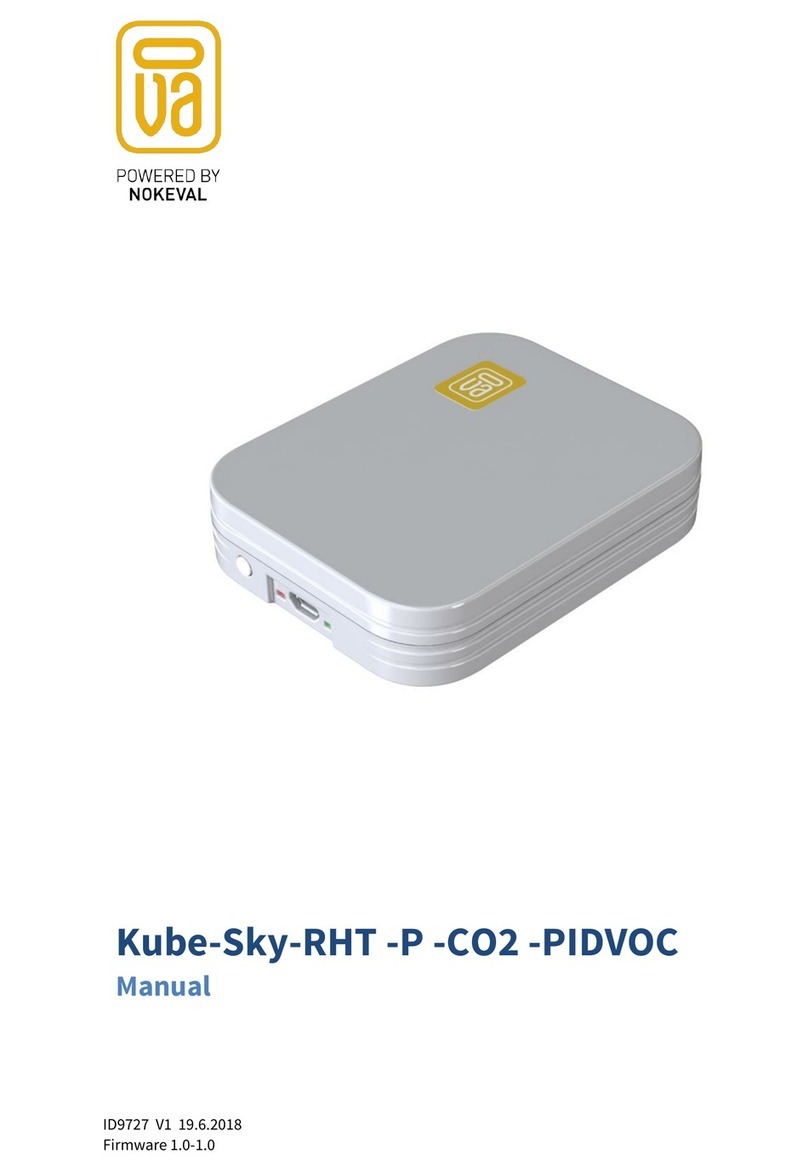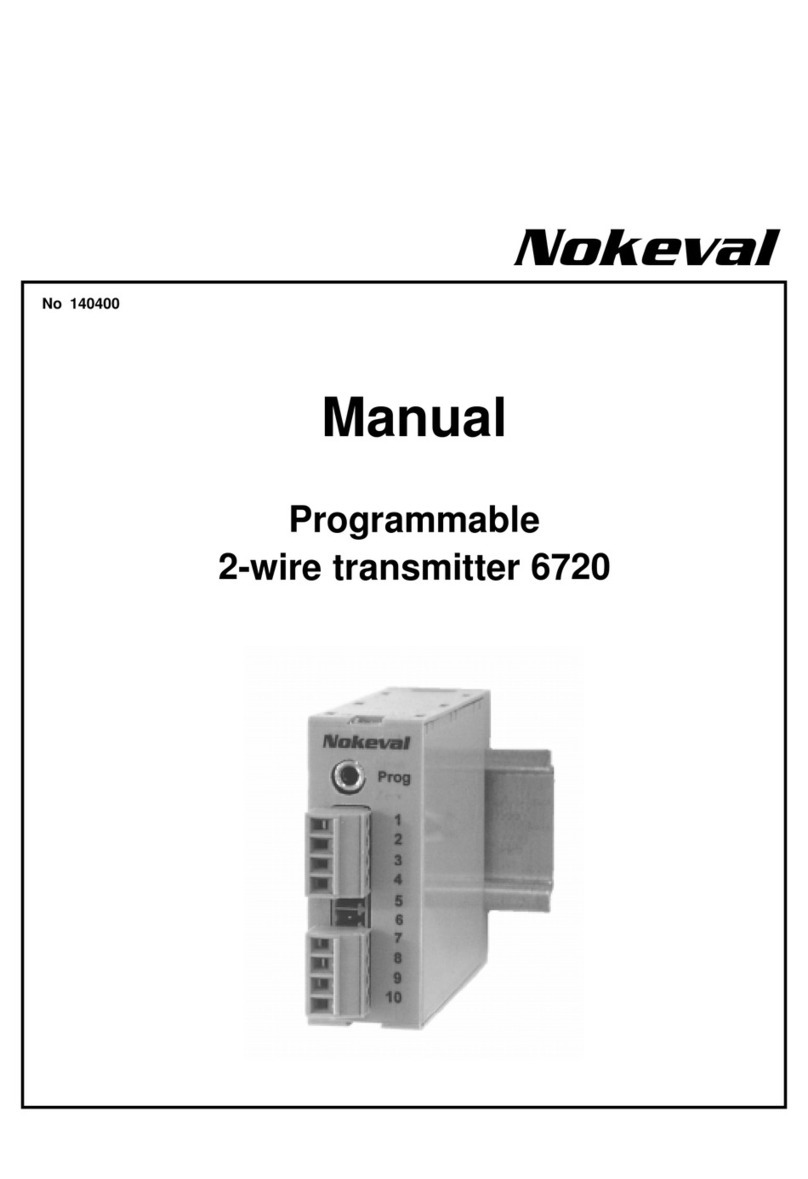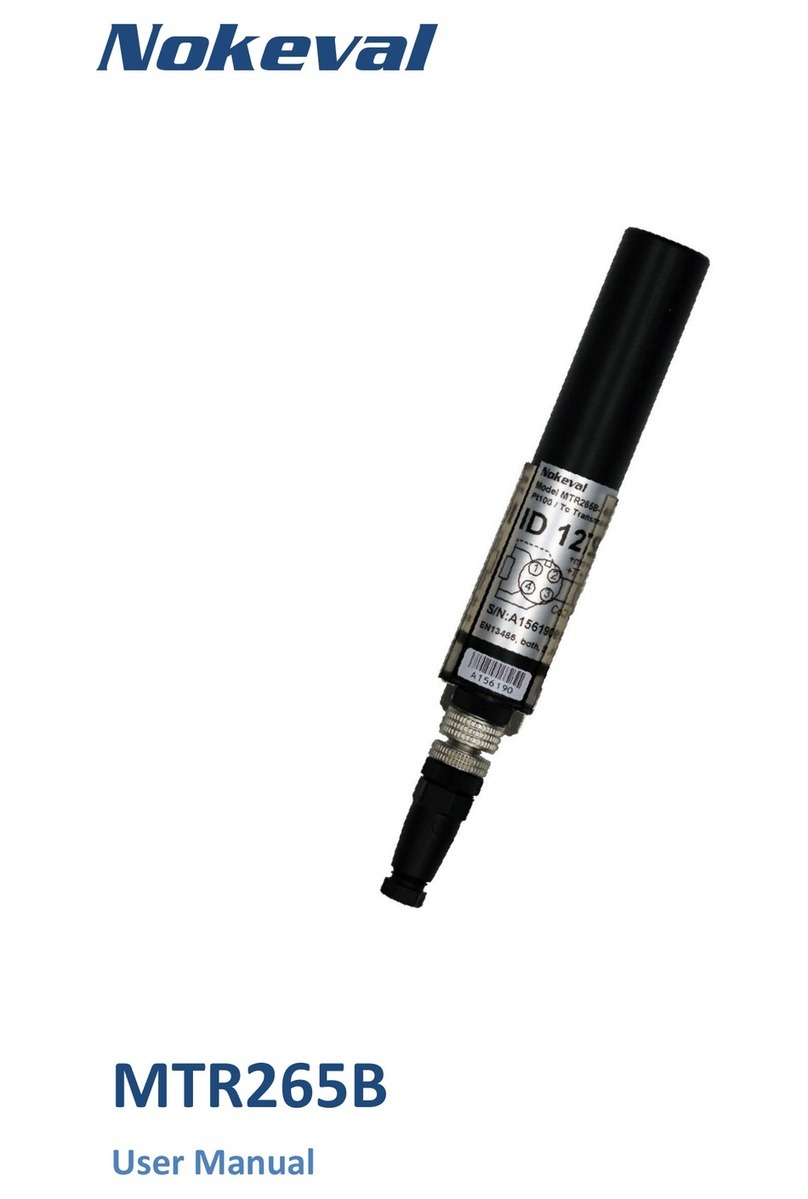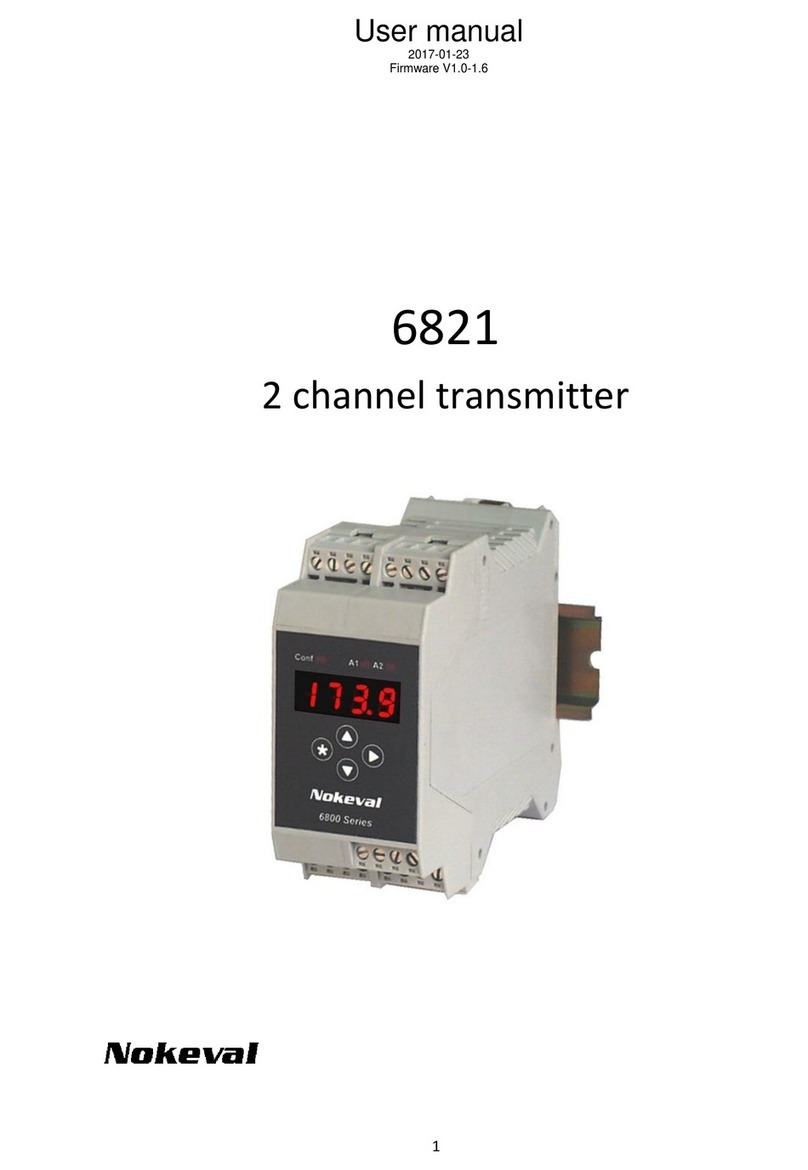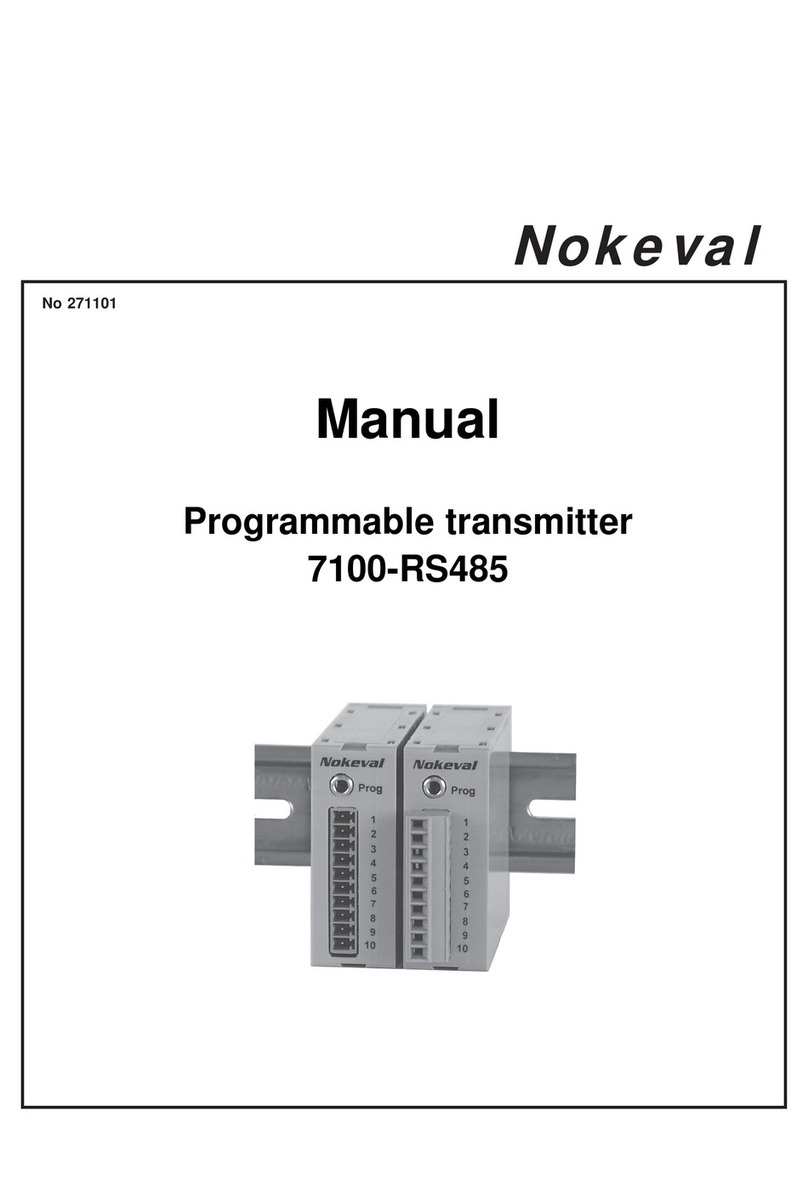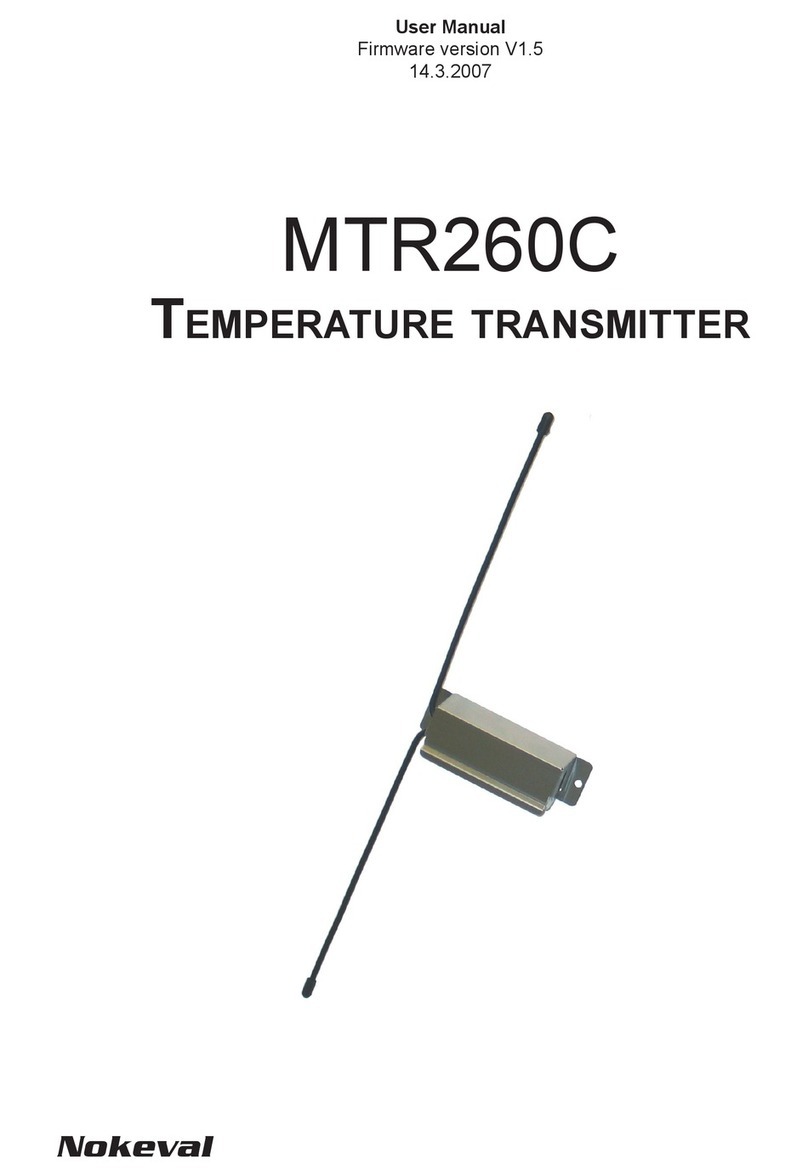
9 - Flex-CS and Flex-ES modules
Flex-CS and Flex-ES modules
Wiring
In the CS model, the RTD sensor is connected to the M12 connector. The module has
a female connector. A compatible male plug with screw terminals is supplied. The
plug has small terminal numbers. A 4-wire sensor should be used, connect its one
end to terminals 1 and 2, and the other end to 3 and 4.
The ES model has spring loaded connector block inside the enclosure. Open the enclosure as described
on page 6. Bring the cable inside the enclosure through the cable gland and connect the sensor wires to
the grey-orange block. Push down the orange buttons if necessary to aid inserting the wires. Then you
can choose to tighten the gland or tighten it later. Insert the circuit board back in the enclosure, guiding
the cable and wires. Replace the cover.
If a 2-wire sensor is used, connect it to 1 and 3 and loop 1 to 2 and 3 to 4, but be prepared for a
significant measurement error due to the cable resistance.
Temp+Humi configuration menu
For the -CS and -ES models, the Temp setup menu provides the following settings for setting up the
sensor:
•Sensor: Select Pt, Ni, or Cu according to the sensor type.
•Range: Select the appropriate range depending on the temperatures to be measured. A smaller
range gives better resolution. The Low range can be used up to 120 ohms (50 °C with a Pt100).
The Mid range can be used up to 240 ohms (380 °C). The High range can be used up to 500
ohms. The Max range can be used up to 2000 ohms (250 °C with a Pt1000).
•R0: Enter the nominal resistance of the sensor. With a Pt100, it will be 100. With a Pt1000, it will
be 1000. If the precise resistance of the sensor is known, e.g. stamped on the sensor, enter it
here to remove the sensor error.
•It is possible to adjust the reading in one or two points if desired. If this is not necessary, set
Pts=0. To adjust in one point, i.e. to use offset correction, set Pts=1, enter the uncorrected
reading in Uncal1 and the desired (reference device) reading in Cal1. For a two-point
adjustment, set Pts=2 and use Uncal1-2 and Cal1-2 to get two points adjusted.
•Code: Allows password protecting this menu.
Period: Select the temperature measurement interval in seconds. 60…300 seconds is a good range for
most tasks. A short period will consume the battery and the radio band.
Temp unit: Select the temperature unit °C or °F.
Output
The radio sends the measurement data using the channels as follows:
Battery status (not with FT10 radio)
Neighbors (not with FT10 radio)






